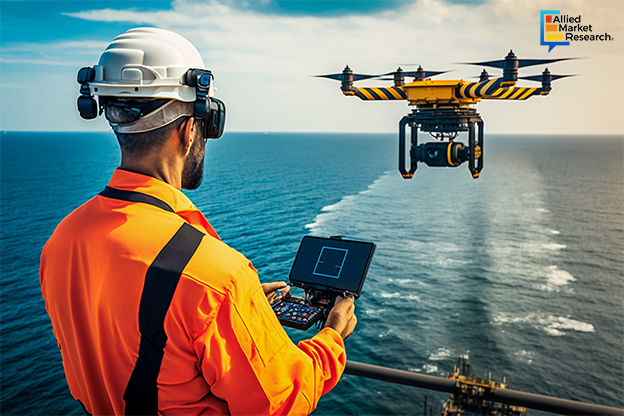Drone Inspection and Monitoring are Revolutionizing Industries – Explore

10 Oct
2023
A lot of organizations today are using drone technology for inspection and monitoring. This is attributed to the fact that drone inspection and monitoring is a cost-conscious and effective way to plan and perform operations at heights and inaccessible areas in real time. Unlike traditional methods, the drone inspection and monitoring infrastructure enables a safe, secure, and strong communication network that results in quick detection and management of issues.
Typically, drone inspection is recommended for three categories: offshore constructions, onshore constructions, and confined spaces. Usually, drones can fly at an altitude of 100 meters. With the FORCE Technology, inspections can be carried out higher than 100 meters. In oil and gas constructions, drone inspection makes it possible to access areas that otherwise may pose numerous health, safety and environmental risks. Confined spaces such as storage tanks for fuel and boilers at power plants are gradually becoming more commonplace for drone inspection.
According to a report published by Allied Market Research, the global drone inspection and monitoring market size is projected to reach $35.11 billion with a considerable CAGR from 2021 to 2030. North America is currently dominating the market with the highest market share. The Asia-Pacific region, on the other hand, is expected to witness the fastest growth rate during the forecasted period. A significant rise in usage of commercial drones, agriculture drones, military drones, and target drones is propelling the market growth.
In addition, a wide array of factors such as surge in demand for safe, accurate inspection & monitoring device, increase in technological advancements in drones, and emergence in lidar technology for commercial drones is driving the growth of the global drone inspection and monitoring market in more than one way. At the same time, the rise in application of drones as remote visual inspection tools for critical infrastructure applications is augmenting the growth of the market to a great extent.
The military sector establishes autonomous drone technology for several grounds such as aerial warfare and Interrupt Service Routine (ISR) applications. The usage of artificial intelligence along with machine learning technology can make drone inspection and monitoring even more efficient, secure, safe, cost-effective as well as autonomous. Recently, the Japanese government made an announcement for the development of an indigenous combat drone, which will operate autonomously. This drone is expected to enter service by 2035. Such initiatives by governments and private companies, in turn, are going to provide immense growth opportunities for the market.

Rosy Behera
Author's Bio- Rosy Behera holds a bachelor’s degree in Electrical and Electronics Engineering and now she is a content writer by profession. She loves to portray her thoughts and ideas with a nice command of words. Grabbing an audience with her creative write-ups is one of her biggest assets so far. Apart from writing, she is a certified “Odisi” dancer and has done Gardharva in Drawing, Painting, and Arts. She always explores new things through travel and is a big foodie.
Avenue: Entire Library membership of Allied Market Research Reports at your disposal
- Avenue is an innovative subscription-based online report database.
- Avail an online access to the entire library of syndicated reports on more than 2,000 niche industries and company profiles on more than 12,000 firms across 11 domains.
- A cost-effective model tailored for entrepreneurs, investors, and students & researchers at universities.
- Request customizations, suggest new reports, and avail analyst support as per your requirements.
- Get an access to the library of reports at any time from any device and anywhere.
Related Post
-
How are Submarine Cables Transforming Global Connectivity with Enhanced User Experience?
-
Endoscopy Procedures: Transformations in Techniques and Applications
-
AI-Powered Video Analytics: How the Product Actually Works for enterprises
-
Painting Robots: Transforming Precision Coating and Creative Applications
-
Innovations in Pharmacovigilance Systems Advancing Patient Safety
-
Understanding Edge Security: Keeping Data Safe Near the Source
-
Exploring the Use and Advancements of 3D Laser Scanners in Professional Applications
-
Reinforcing Industrial Controls with Smarter Tools and Training








